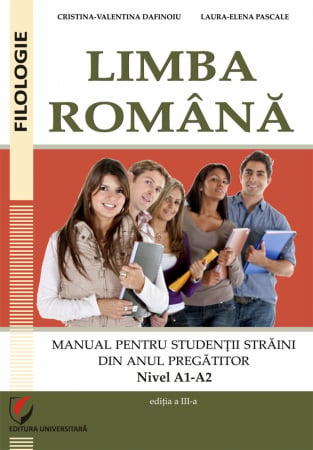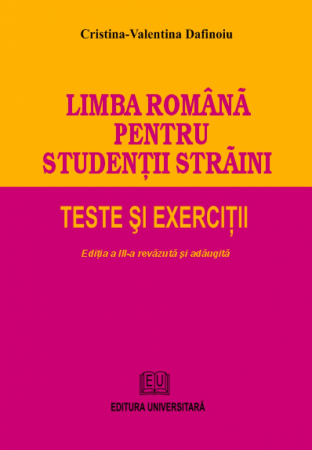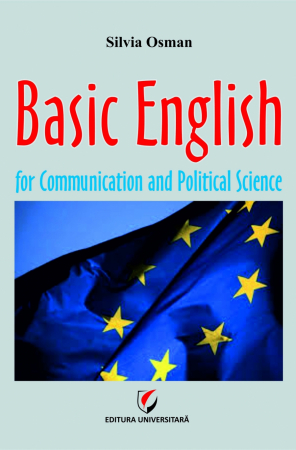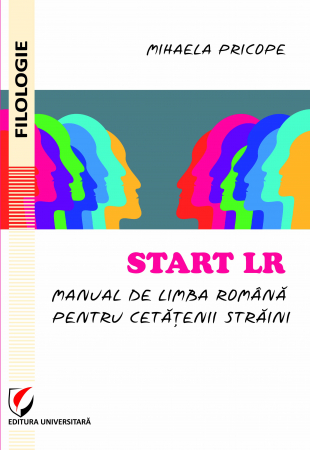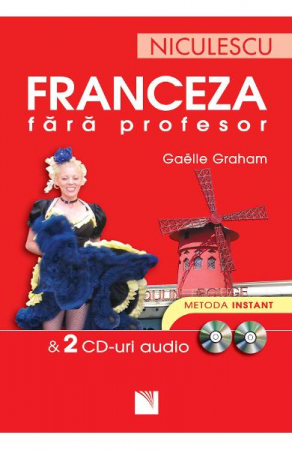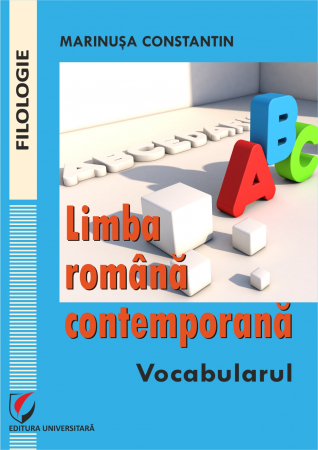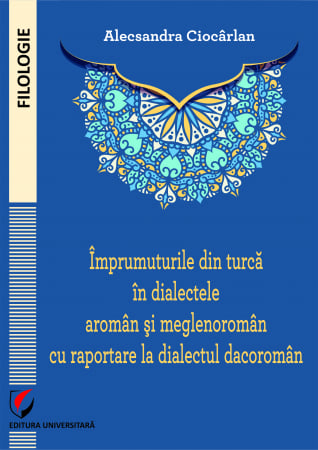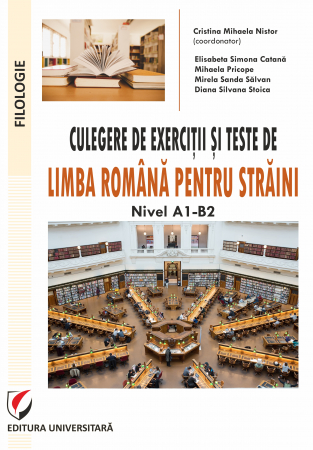Propuneri manuscrise: info@editurauniversitara.ro: 0745 204 115
Urmarire comenzi Persoane fizice / Vanzari: 0745 200 718 / 0745 200 357 / Comenzi Persoane juridice: 0721 722 783
ISBN: 978-606-28-0873-0
DOI: 10.5682/9786062808730
Anul publicării: 2019
Editia: I
Pagini: 206
Editura: Editura Universitara
Autor: Nicoleta Stanca
- Descriere
- Download (1)
- Autori
- Cuprins
- Cuvant inainte
- Unde se gaseste
- Review-uri (0)
Of course, one of my first duties as Ambassador is to promote Ireland’s own rich culture. This can be challenging in some locations. However, in Romania I was delighted to find that some aspects of Ireland and Irish culture were already well known and appreciated here. That was especially the case for our music, dancing and literature. I also discovered that the phenomenon of the “Irish Pub” had long preceded my arrival in Bucharest and elsewhere in Romania, providing venues for resident and visiting Irish musicians and Irish dancers to perform in front of appreciative local audiences eager to experience the spirit of Ireland. I have also seen for myself the huge appetite that exists for tickets when legendary Irish dancing spectaculars visit Bucharest and other venues throughout the country.
One of the many things that Romanian and Irish people have in common is our love for literature, and both countries have produced many talented authors and poets. I was delighted to learn that James Joyce, W.B. Yeats, Oscar Wilde and Seamus Heaney, among others, were enthusiastically studied in the faculties of letters, foreign languages and literatures of most Romanian Universities. I soon came to the conclusion that the passion and enthusiasm for Romanian and foreign literature that I came across must be directly attributable to the quality of teaching in Romanian schools and universities. When I met Professor Nicoleta Stanca the picture became even clearer. Professor Stanca, who has a PhD on one of Ireland’s greatest literary figures, the Nobel prize-winning poet Seamus Heaney, keeps Irish literature close to her heart. I have been bowled over by her depth of knowledge and enthusiasm for Irish literature and how she manages to engender a love for all literature in her students. Professor Stanca generously gave me the opportunity to bring academics from Ireland to lecture on the work of famous Irish poets and writers, thus strengthening the cultural bridge between Ireland and Romania.
The particular popularity of James Joyce’s novel Ulysses in Romania also provided me and my predecessors with opportunities to celebrate Bloomsday in Bucharest on the 16th of June every year. The day is named after the main character in Ulysses, Leopold Bloom, who famously went walking around Dublin city (in Dublin we would say he “rambled” around the city) on 16 June 1904, which was also the actual date of Joyce’s first outing with his wife-to-be, Nora Barnacle. Bloomsday represents a celebration of James Joyce’s life and works through the reading of passages from his novel, eating some of the culinary delights that Joyce relished and singing some of the songs with which he is associated. The nature of the celebration in Bucharest has varied from year to year, from concerts and readings in theatre halls to displaying the Embassy’s 22-panel Joyce Exhibition in metro stations and even in the Brâncuşi Hall of the Palace of Parliament.
Apart from Irish literature, I also found that Irish films were popular with Romanian film lovers. Not only does the Embassy participate in various international and local film festivals throughout the country, but we also bring Irish feature and short films to Universities for viewing by students and academics, including Ovidius University in Constanţa. The Embassy also annually organises the Irish Film Days Festival of Bucharest, which celebrated its 10th year in November 2018 with the screening of In the Name of Peace – John Hume in America directed by Maurice Fitzpatrick who was present for the occasion. John Hume was one of the main authors of the peace process in Northern Ireland, which in turn led to the “Good Friday Agreement” that regularly featured in media coverage of the Brexit negotiations between the UK and the EU.
From film I move to theatre. Over the years many Irish theatre companies have travelled to Romania to participate in theatre festivals organised in various cities. Plays staged here by talented Irish theatre directors have been very successful, whether written by Sean O’Casey or interpretations of the work of Anton Chekhov. The link between Irish and Romanian cultures was further reflected in the work of a number of well- known Romanian theatre directors, such as Silviu Purcărete who staged Jonathan Swift’s Gulliver’s Travels in Sibiu and Alexandru Dabija who staged Samuel Beckett’s Krapp’s Last Tape in Bucharest, both challenging but highly successful productions.
For the Irish Embassy, the busiest time of the year by far is around St Patrick’s Day, our National Day which arises on 17 March. Irish people love to celebrate their heritage and culture and they are always happy when others join in. The size and geographical spread of our diaspora means that every year St Patrick’s Day is celebrated from Dublin to New York and from London to Sydney - and everywhere in between! Members of the Irish government also try to visit as many Irish communities abroad as possible around St Patrick’s Day and I was glad that Bucharest was included for the first time in 2019. St Patrick’s Day also provides Irish Ambassadors with the opportunity to host National Day receptions for the local diplomatic and Irish communities and other friends of the Embassy, which are always most enjoyable occasions.
The Embassy’s collaboration with the STEYsha Irish Dancing School of Bucharest is our most enduring cultural partnership. They are always willing and ready to represent the Embassy and Ireland at festivals and other events, large and small, especially around our St Patrick’s Day but also throughout the year.
In the context of Romania’s Presidency of the Council of the European Union for the first half of 2019 I should also mention that the Irish Embassy gladly participates annually in cultural activities associated with Europe Day, and other events connected with the EU that are organised by the Romanian Foreign Ministry, the EU Offices in Bucharest and others in and outside of the Capital. Against the background of Brexit it is good to get together regularly with representatives of the other EU Member States and celebrate the values that we share and that the EU upholds. These events sometimes have a broader scope - the Embassy’s participation in the World Experience Festival held last summer under the auspices of the Romanian Ministry of Foreign Affairs was one of the highlights of our cultural year.
Together, my heightened experience of Irish culture and my gradual education in Romanian culture added huge value to my assignment in Bucharest. I will never forget my unique Romanian experience and I owe a huge gratitude to my good friend Nicoleta Stanca for assisting and guiding me in my journey. She had done astonishing work in examining the parallels between the Irish and Romanian cultures, providing vivid pictures of real life in our two countries and weaving them together. She also completed an excellent synthesis of the cultural activity of the Irish Embassy in Romania and managed to make our contribution look much better than we deserved. Above all, Professor Stanca has helped the Irish and Romanian people to cross the bridge between our two countries, using culture as a vehicle through which to hugely increase awareness and enhance the reputation of Ireland in Romania, and of Romania in Ireland.
Derek Feely
Ambassador of Ireland to Romania
-
Irish-Romanian...
Descarca
NICOLETA STANCA este profesor asociat la Universitatea Ovidius din Constanta. A publicat trei studii de lungime a cartilor: Maping Ireland (Essays on Space and Place in Contemporary Irish Poetry), (2014), The Harp and the Pen (Tradition and Novelty in Modern Irish Writing), (2013), Duality of Vision in Seamus Heaney's Writings (2009), articole in reviste academice si capitole de carte despre Studii irlandeze, identitate irlandeza-americana, studii literare si cultură populara.
A fost co-editor a volumelor conferintelor, cea mai recenta fiind: Provocari nationale si transnationale catre imaginarul american (2018).
Este vicepresedinte a Asociatiei Romane pentru Studii Americane si absolventa a Institutului Multinational de Studii Americane, Universitatea New York (NYU).
Acknowledgements / 7
Foreword / 9
Introduction / 13
CHAPTER I
Travel and Cultural Diplomacy, Literature and Identity: A Transnationalist Approach to the Circulation of People and Texts as Ambassadors of Culture / 19
CHAPTER II
Journeys trough Romania (Travel Writings by Irish Men and Women: Patrick O’Brien’s Journal of a Residence in the Danubian Principalities in the Autumn and Winter of 1853, Maude Rea Parkinson’s Twenty Years in Romania and Peter Hurley’s The Way of the Crosses) / 43
CHAPTER III
Irish Writers in the Romanian Space. Highlights of the Reception of W.B. Yeats, J. Joyce and S. Heaney / 91
CHAPTER IV
Ireland-Romania Relations: Cultural Initiatives of the Embassy of Ireland in Bucharest / 131
Conclusion / 189
Works Cited / 191
Annexes / 203
The context of this volume on Irish-Romanian Cultural Connections is both very personal and academic. It is academic because I teach elective courses on Irish literature in the English major undergraduate program and the MA program at Ovidius University Constanţa, the Faculty of Letters, and since 2012 the Embassy of Ireland in Bucharest has supported all my efforts bringing the two institutions together, the Embassy and the University. Yet, the book is also very personal because, throughout these years, there has been a generous and warm-hearted group of people at the Embassy, who trusted me and encouraged me and I am grateful to: Their Excellencies Ambassadors: John Morahan, Oliver Grogan, Gerard Corr and Derek Feely; Deputy Heads of the Mission: David Costello, Andrew Harwood and Patrick Coleman; PA to Ambassador and Cultural Officer Anamaria Suciu and the entire team at the Irish Embassy. Thus, my work at the university, in a permanent collaboration with the Embassy, has revealed one vital meaning of the Irish-Romanian connections, i.e. truly dedicated individuals who are open to embrace otherness and graft it on their identity so that the communion becomes relevant for both parties.
This book is divided in four chapters: chapter I, “Travel and Cultural Diplomacy, Literature and Identity: A Transnationalist Approach to the Circulation of People and Texts as Ambassadors of Culture”; chapter II, “Journeys trough Romania (Travel Writings by Irish Men and Women: Patrick O’Brien’s Journal of a Residence in the Danubian Principalities in the Autumn and Winter of 1853, Maude Rea Parkinson’s Twenty Years in Romania and Peter Hurley’s The Way of the Crosses)”; chapter III, “Irish Writers in the Romanian Space. Highlights of the Reception of W.B. Yeats, J. Joyce and S. Heaney” and chapter IV, “Ireland-Romania Relations: Cultural Initiatives of the Embassy of Ireland in Bucharest”. The key characters of my account of the Irish-Romanian Connections are travellers, writers and their books and ambassadors. They all travel; if it had not been for their journeys – real, mental, spiritual, cultural – the connections would have been poorer. Getting back to the academic layer of my book, this is the purpose of the first chapter, to demonstrate, through theory, the vital role of the circulation of people, writers, texts and Embassy representatives in order to highlight the true value of interconnections and interrelations.
Chapter II, “Journeys trough Romania (Travel Writings by Irish Men and Women: Patrick O’Brien’s Journal of a Residence in the Danubian Principalities in the Autumn and Winter of 1853, Maude Rea Parkinson’s Twenty Years in Romania and Peter Hurley’s The Way of the Crosses)” presents the travel journals of three Irish “travellers” through Romania in different historical ages, from mid-19th century to the contemporary period. Both volumes by Patrick O’Brien and Maude Rea Parkinson have been more recently brought to the attention of the Romanian readers by Professor Constantin Ardeleanu from the History Department of the Lower Danube University of Galaţi. He translated O’Brien’s book and co-translated Rea Parkinson’s volume with a colleague from the same university, Oana Celia Gheorghiu. Taking into account the interest of the historian’s in the British economy and political interests at the Danube mouths (1829-1914) and the foreign trade and navigation on the Lower Danube (1881-1900), it is easy to realize the value of his in-depth introductions to the two volumes.
Patrick O’Brien’s book was initially published in 1854, one year after the journey, and the book was translated into Romanian and published in 2016, but fragments had appeared in the Romanian translation of Constantin Ardeleanu in the volume Calatori straini despre Tarile Romane in sec. al XIX-lea, vol. 6: 1852-1856, Editura Academiei Române, Bucureşti, 2010 (pp. 79-103). Maude Rea Parkinson stayed in Romania between 1889 and 1916, published the book in English in 1921, when she was back home, and in Romania it was printed in translation in 2014. Peter Hurley’s travel journal, The Way of the Crosses, covers his 26-day Ulyssean journey through the Romanian mountains and villages in the fasting period before Christmas 2012 and he published the book in English the following year. The Romanian context of the writing of the three travel journals is completely different, yet, through the perceptions of their Irish authors, a certain sense of continuity of identity could be discovered.
In 1853, the international background was that in which the Russian army occupied Moldavia and Wallachia. Between 1828 and 1834, the Romanian Principalities had been under Russian military occupation as the latter were constantly targeting the straits at the Black Sea and the Western powers became more willing to counter its force in the region. The Russian domination was visible through the quarantine measures at the mouths of the Danube and the taxes and trade control in the ports of Brăila and Galaţi. Further and stronger control by the Russian Empire was manifested in the period 1848-1851 in exchange for the loss of the domination of the Holy Lands at the expense of the Catholics, a situation used as a pretext for the Russians to invade Moldavia and Wallachia in 1853, when Patrick O’Brien was in the area.
Twenty Years in Romania was written a few decades later in an equally difficult context, that of the Great War and Romania’s participation in it in 1916. The public opinion in the West in general and in Britain in particular was favourable to the goal of the Romanian independence and union, the framework for it having been created through the work of the Anglo-Romanian Society, publications and the official propaganda of the Romanian authorities. Maud Rea Parkinson’s volume brings a personal contribution to the warm, yet, picturesque, image of Romania at the turn of the 20th century (1889-1916). The focus of her descriptions is mainly on townlife, especially Bucharest in full process of modernization, social layers, pastimes, institutions, politics, education, beliefs and customs in various parts of our country.
One century later, in 2012, Peter Hurley, this time an Irishman who eventually settled in Romania in 1994, embarks on a journey on foot through Romania, from north (Maramureş) to the capital city, Bucharest. His travel journal gives an answer to the question the Irishman is constantly asked mostly by Romanians and which he mentions in the preface to his book The Way of the Crosses: “Why the hell do you live in Romania?”. This is the Romanian context at the turn of the 21st century, meaning a “quiet cataclysm”, according to Hurley (The Way iii), that of Romanian migration all over Europe and even all over the world. For the Irishman, it rings bells of an entire history of Irish migration. But, the counterargument to this reality and the answer to the question previously mentioned is offered by Hurley’s entire experience on the way from Săpânţa to Bucharest: the spirituality of the places given by the humanity and generosity of their inhabitants and their stubbornness to preserve a traditional way of life in spite of all obstacles. This is what gives meaning to the lives of those who chose to stay in Romania in spite of the difficulties and this gives a sense of continuity to the travelling accounts from 1853 up to the present.
I began writing chapter III, “Irish Writers in the Romanian Space. Highlights of the Reception of W.B. Yeats, J. Joyce and S. Heaney”, as a presentation of the reception of the great literary voices of Irish literature in the Romanian space and as I was looking for information on when texts by Yeats, Joyce and Heaney were first read, translated and appreciated in our country, I realized that the story of reception is also one of movement and circulation, similar to that of the travelers in chapter II.
Thus, the earliest instances of Yeatsian reception date back to the 1930s, when the visionary poet was in full maturity and still writing. The same decade, the 1930s, witnessed the fist translations into Romanian from Joyce’s Dubliners, with the entire volume translated in 1966. There is proof that Ulysses had reached English language specialists in Romania in the 1930s, but its journey of translation and publication was more difficult in a context of communist censorship. And Seamus Heaney was introduced in our country in the 1990s when he was first translated by the poet Ana Blandiana and presented by Professor Mihaela Irimia.
Beyond the initial encounters of the Romanian reading public with each of these writers, the odyssey of their reception continues: through conferences in Romanian universities and attendance of summer schools in Ireland by Romanian academics, through concerts, exhibitions, lectures organized by the Embassy of Ireland in Romania, through more recent translations or further editions of older translations and all sort of other publications related to their works and last, but not least, through the legacies of Yeats, Joyce and Heaney for Romanian writers, to which the third chapter refers.
The last chapter, “Ireland-Romania Relations: Cultural Initiatives of the Embassy of Ireland in Bucharest”, rightfully crowns the volume as the contribution of the Embassy of Ireland to the present richness of Irish- Romanian connections has been the engine to start the journey of my book. And what other people than the ambassadors and representatives of Ireland, supported by an entire Romanian team in the institution, could offer better examples of joint projects, initiatives and have ideas for cooperation and collaboration?
St. Patrick’s Day, the EU Irish Presidency in 2013 (interestingly, Romania’s turn is in 2019), Bloomsdays, film festivals, concerts, theatrical productions, book launches and literature festivals, lectures and travelling exhibitions all have given opportunities for cultural diplomacy, which the Embassy of Ireland in Romania has fully made use of. By contributing to better knowledge of Irish culture in our country and developing a stronger profile of Ireland in this space, the Embassy, also thanks to the networks activated, manages to strengthen the Irish-Romanian relationships and enhance socio-cultural cooperation.
Suport clienti Luni - Vineri intre 8.00 - 16.00
0745 200 718 0745 200 357 comenzi@editurauniversitara.ro
6359.png)
![Irish-Romanian Cultural Connections: Travellers, Writers and Ambassadors [1] Irish-Romanian Cultural Connections: Travellers, Writers and Ambassadors [1]](https://gomagcdn.ro/domains/editurauniversitara.ro/files/product/large/irish-romanian-cultural-connections-travellers-writers-and-ambassadors-177-9851.jpg)
